Clouds and Mountains at Sunrise
Clouds and Chugach Mountains at Sunrise. Panasonic DMC-L1 with OMD 40-150 lens. Eagle River, Alaska.
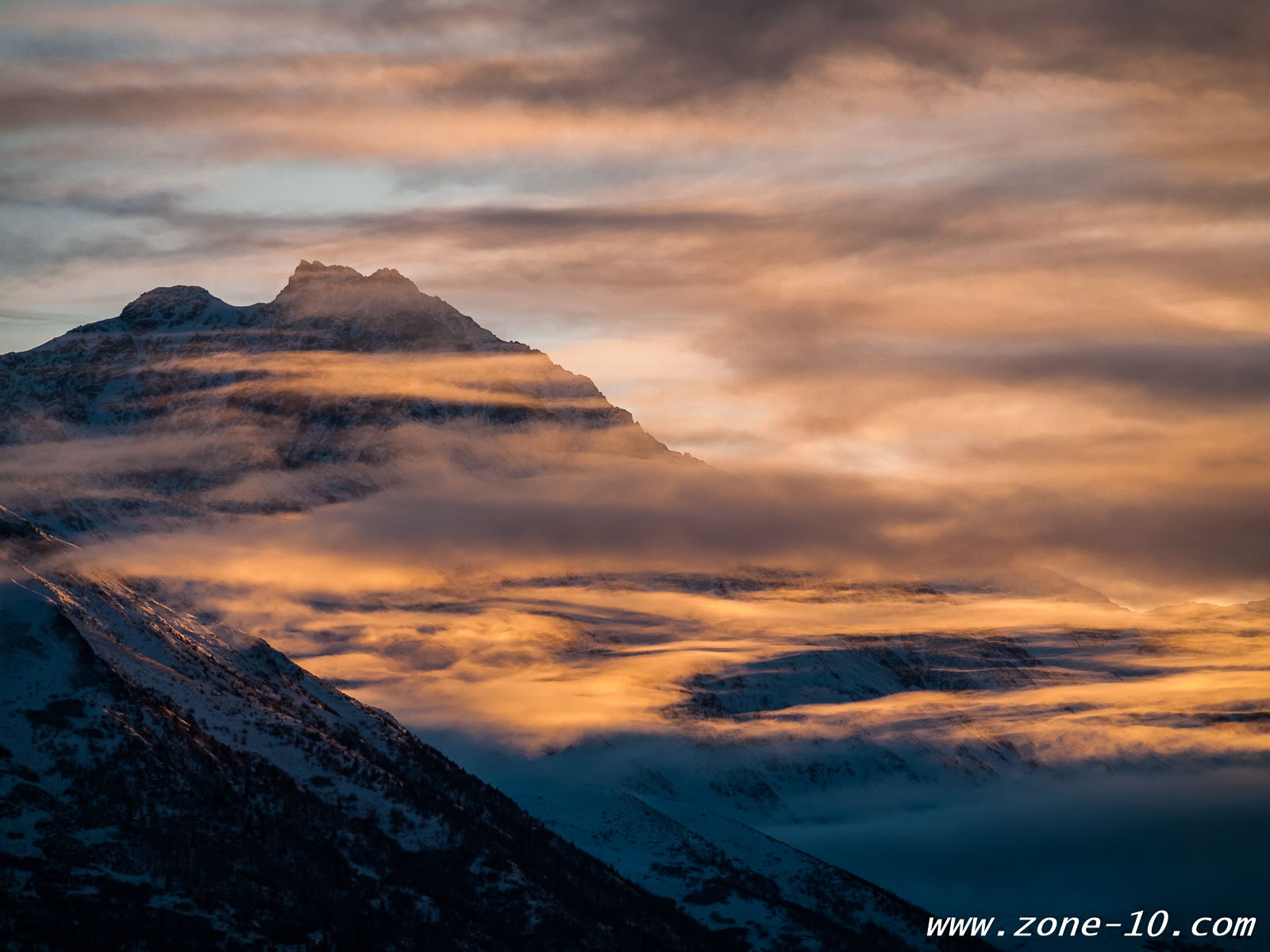
- Read more about Clouds and Mountains at Sunrise
- Log in or register to post comments
Clouds and Chugach Mountains at Sunrise. Panasonic DMC-L1 with OMD 40-150 lens. Eagle River, Alaska.

Locked gate to a remote cell-tower site. Panasonic L1 with OMD 14-42 lens.
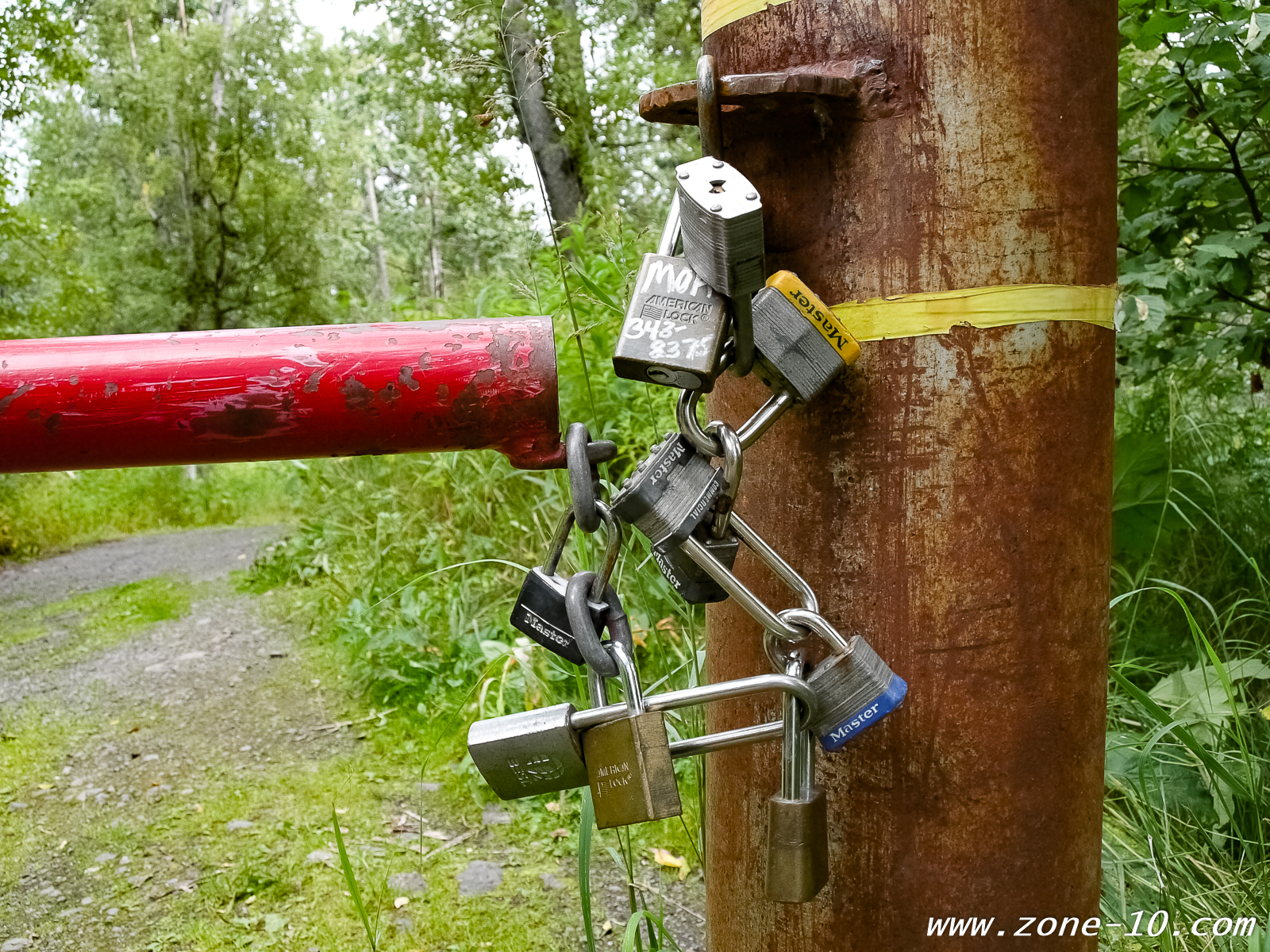
Moose and Anchorage. Photo taken from near the Mt. Baldy trailhead in Eagle River. Panasonic L1 with DZ 14-45 zoom lens.
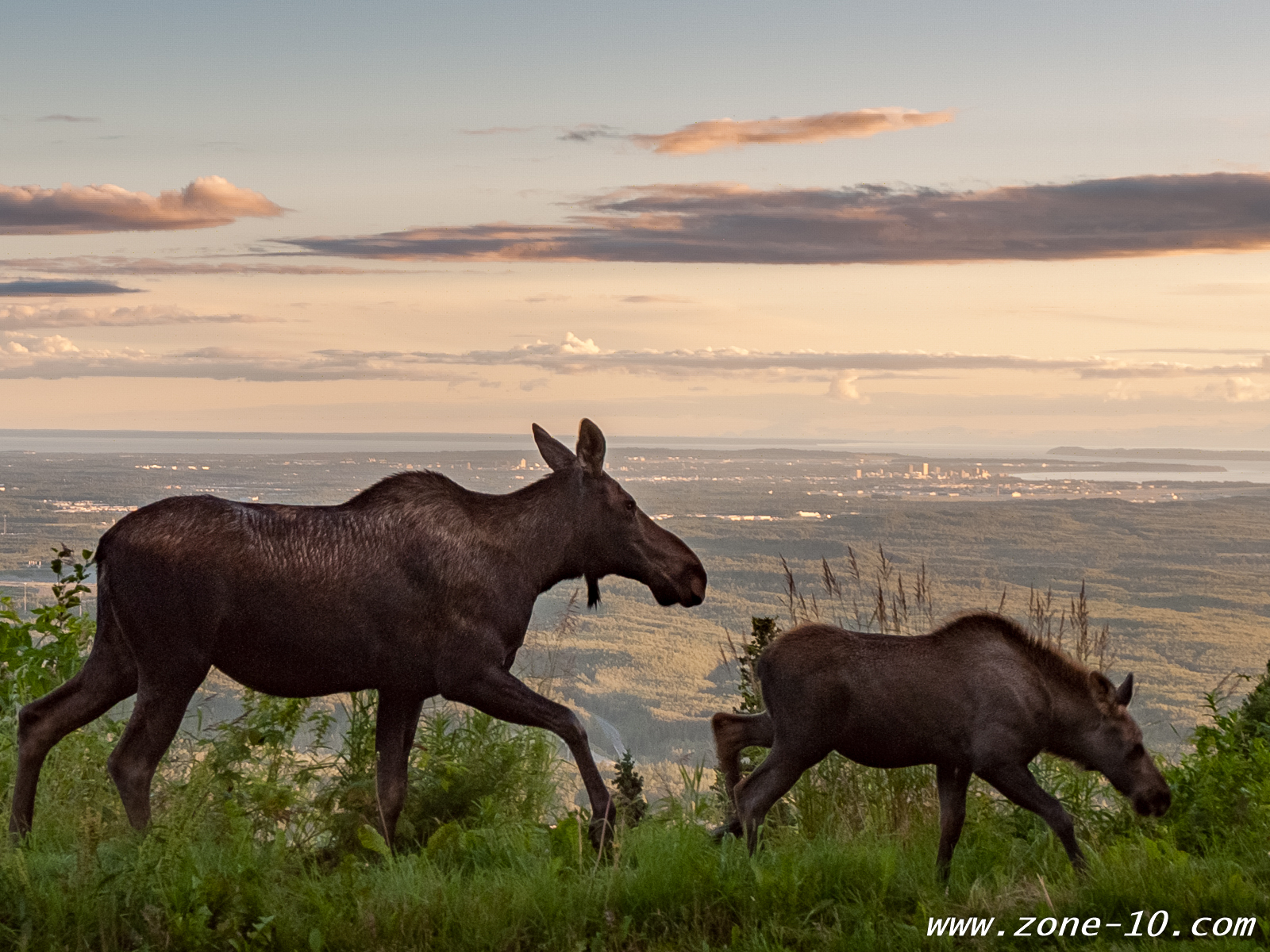
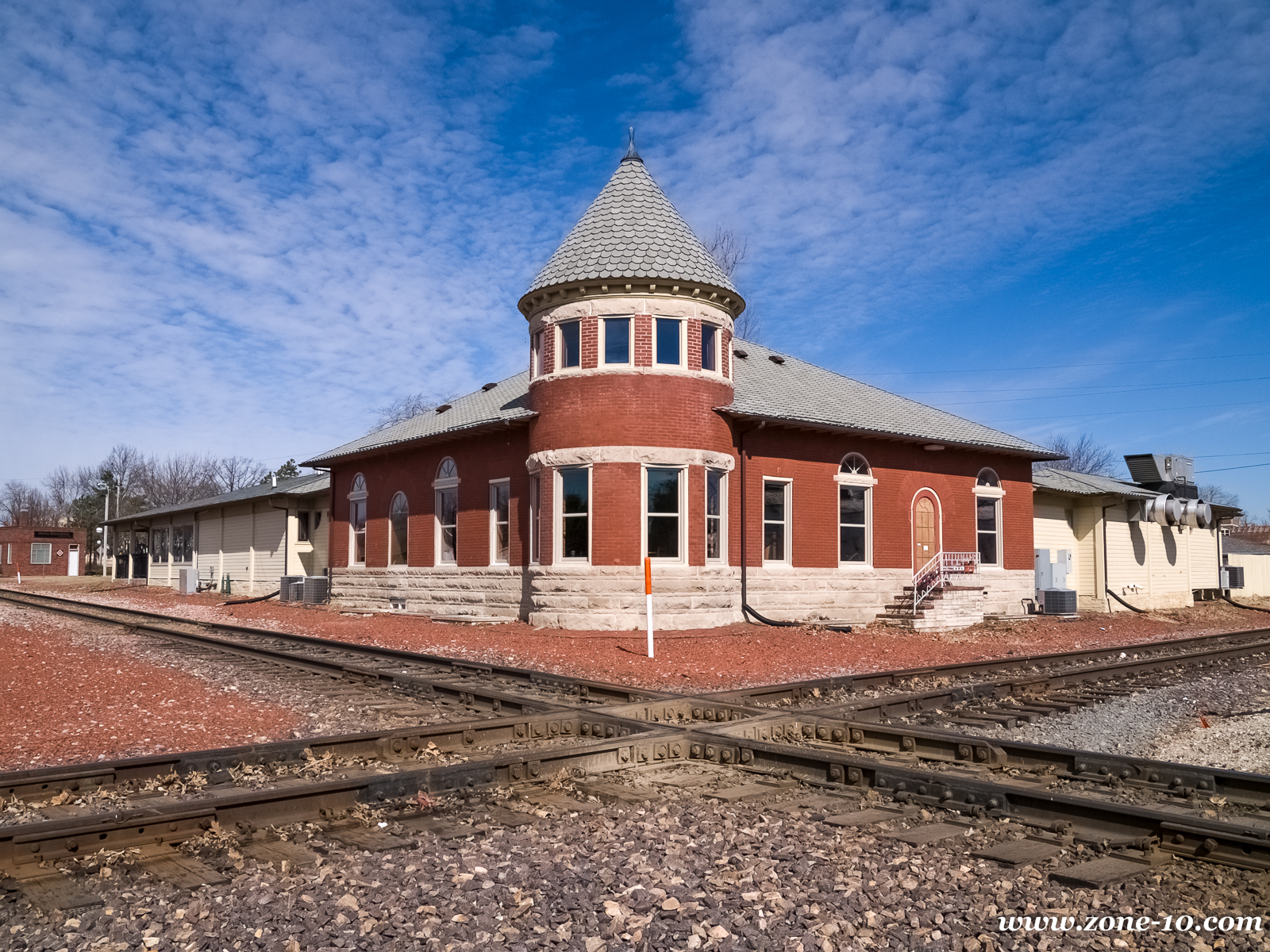
Rock Island Railroad Train Station in Grinnell, Iowa. Photo taken with the Panasonic DMC-L1 and Leica 14-50 zoom. Raw converted in Silkypix, edited in Lightroom.
Here is a close up of the rail crossing itself.

This is a six image pano/stitch from the Panasonic DMC-L1. Processed in Lightroom.
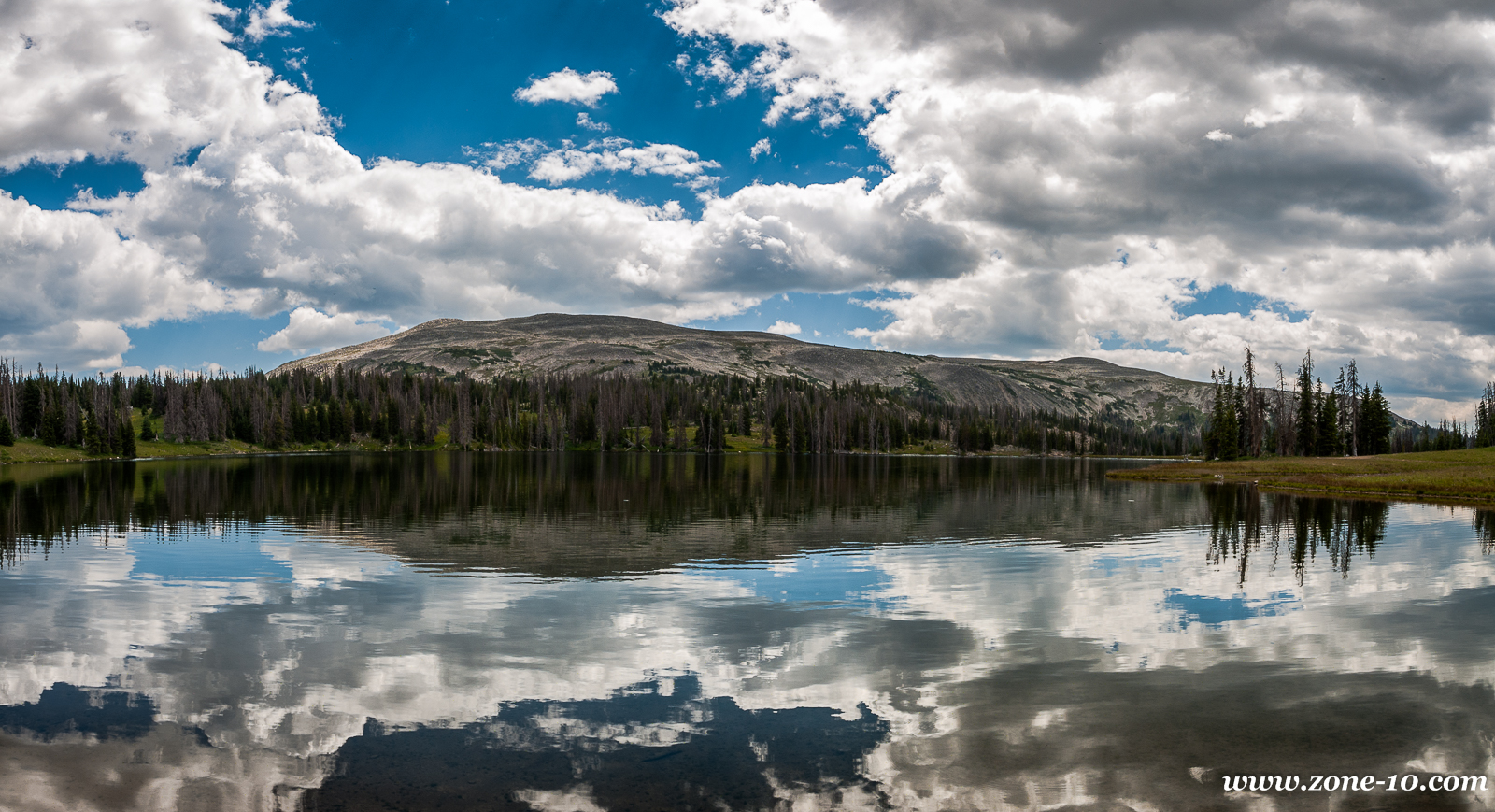
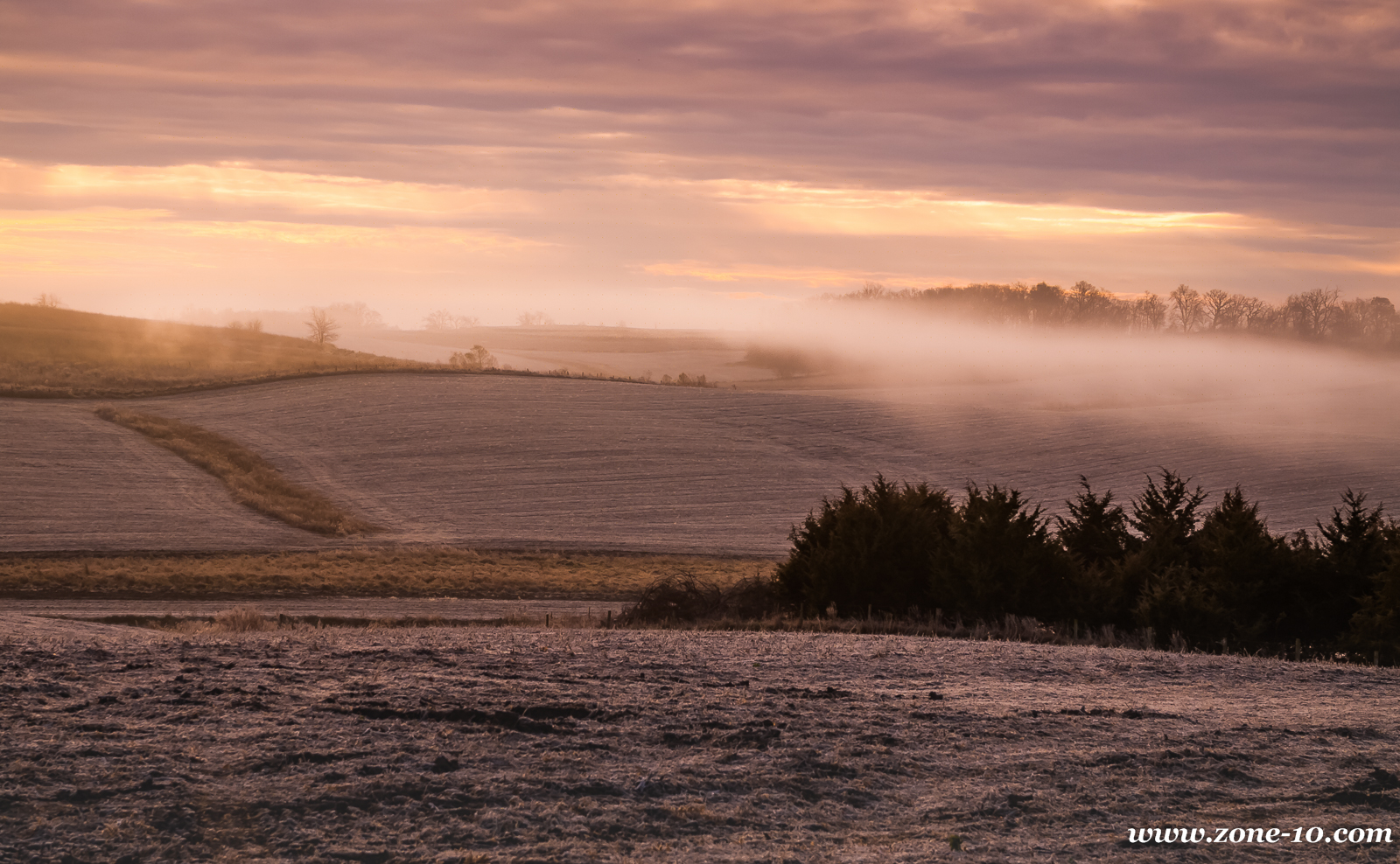
The art of editing a photograph is just that, an art. There are no formulas, only basic guidelines. The "Rule of Thirds" is an example that comes to mind. These days, there are a lot of people demonstrating editing techniques with Youtube videos on how to get the most out of your images in Lightroom and Photoshop. While I am tempted to do the same, and I will, to some extent, let's take a look at the original, unedited, uncropped version.
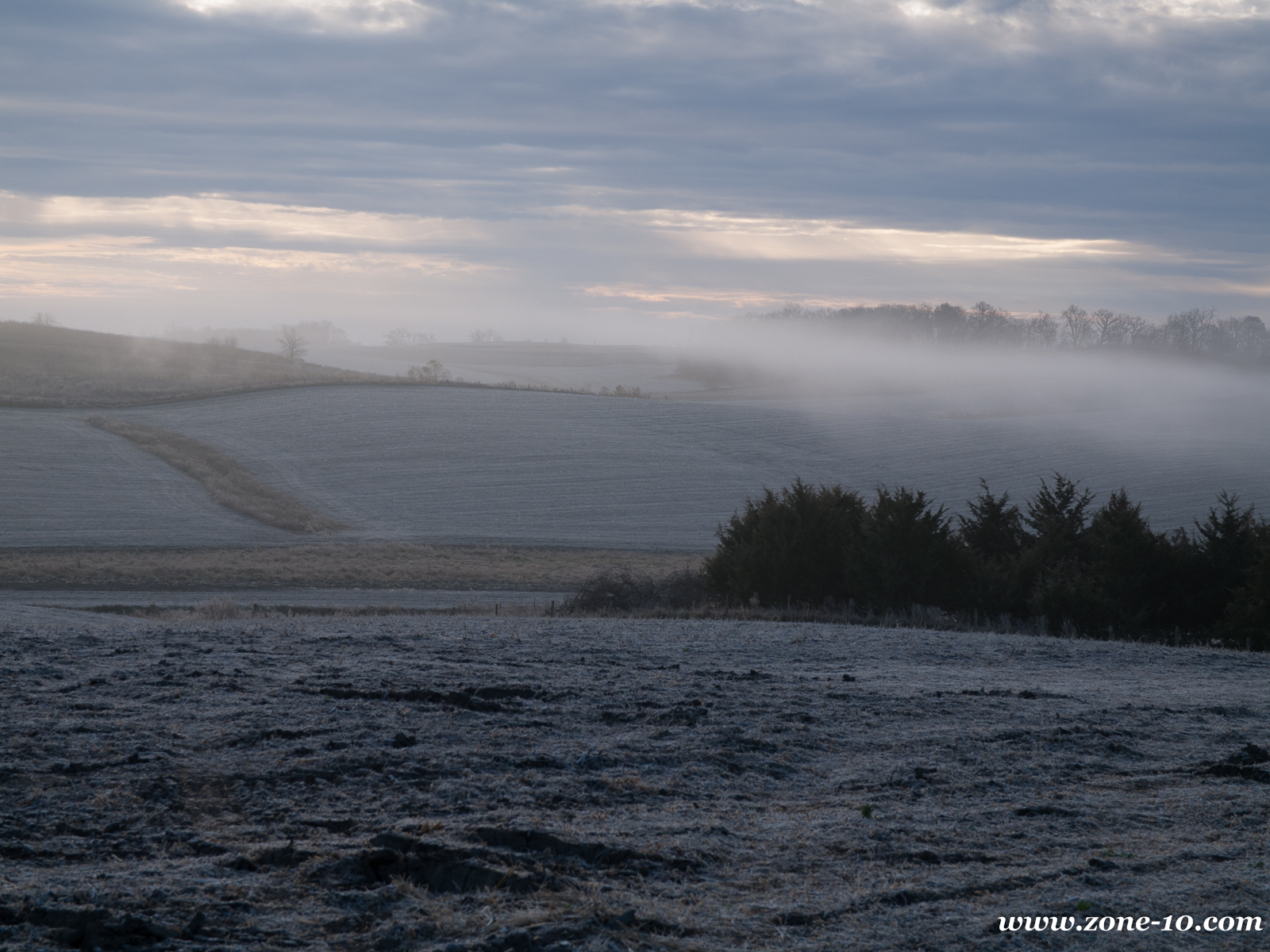
The hazard to showing you this is that you would be tempted to process and edit the picture entirely differently. That's perfectly acceptable. In fact, this is the third time I've published this very photograph and each time it has been different. But this time I wanted to give a little background to the thought process that went into THIS particular version. One thing to keep in mind is that your VISION of how to present an image may not be wrong, but the actual mechanics involved in presenting that vision may be wrong. This is why there are general guidelines to follow. I'm not saying that this is the best or only way to edit this image, but I am saying that it was my vision for this image on January 3, 2016. It may be different two days from now.
All editing was done in Adobe Lightroom CC 2015.
Do keep in mind that editing is an iterative process. Just as a chef will taste test the soup and add a touch of salt late in the cooking process, so editing images is the same. You'll get to the end and discover that a pinch of visual salt back in stage one is required.
Tonal Adjustment - Overall Brightness and Contrast Interpretation
First thing to do is an initial tonal adjustment. This is done by pulling the Highlight slider back a little and moving the Shadow slider up. This decreases the contrast in the highlights and shadows. I then increased the Contrast which essentially pulled the midtones apart and gave the overall image some snap. I did add a little bit of Clarity and DeHaze at this stage to give the image bite. As the Highlight slider did very little on this image other than in the sky, I decided to bring it back up to normal and make that adjustment more localized later. I liked what it did to the sky, but not the rest of the image.
White Balance - Overall Color Interpretation
Second thing is I adjusted the White Balance. I started out with the "Shade" setting, but could have also used the "Shadow". To give it more sunrise look, I then increased the Tint towards magenta. Then I added some Vibrance and Saturation to louden the image up. I did go down into Lens Corrections and clicked on Remove Chromatic Aberration.
Detail Control - Noise Reduction and Sharpening
Third item was to adjust the Noise Reduction and Sharpening. The Panasonic DMC-L1, which I used for this image, will not perfectly convert in Adobe converters as you will get a bit of a maize pattern and also uniform black dots. It is important to work the Sharpening Detail and Masking sliders till the dots effectively disappear. There are times when they won't, so you may be called upon to do further editing heroics.
At this point, we have a choice. We can either crop the image, or do our localized editing. I recommend that you do all of your localized editing BEFORE cropping the image. This way, if you need to alter a crop, you don't have to correct your edits.
Localized Editing - Enhancing the subject of the photograph
Editing is my fourth item. There are six specific edits to this photo, which could have been done any number of ways, but this is what I did here. First, I placed a Graduated Filter down over the sky. With this filter, I increased contrast and pulled back the Highlights slider. I liked what the Highlight recovery slider did to the sky, but not the rest of the image, so I applied it here. I added a second Graduated Filter over the foreground and pulled back the exposure and lifted the blacks. I wanted to make the fog more prominant, as the other edits really reduced it, so I added an Adjustment Brush in the band of fog and pulled the Highlights slider up. I had tried various adjustments, including Exposure, Contrast, Whites, Clarity, and so forth, but in this specific case, just lifting up the Highlights slider did what I wanted it to do. A second Adjustment Brush was placed over the trees and I pulled the Shadows slider back. Again, it was just the one tool that accomplished the task THIS TIME, but could have been any of the other sliders on another image. A third Adjustment Brush was placed over the entire middle distance of the image and I increased Clarity and Dehaze sliders to get this middle range to better match the rest of the image. A final Adjustment Brush was placed over the grassy areas and I adjusted the Temp +6 and Tint -6 to put a tiny bit of green back into the grass.
Cropping - Presentation and Eye-Flow Control
Finally, the image was cropped. I removed a little bit of sky and a lot more of the bottom. Using the "Thirds" marks in Lightroom, I put the horizon at the top third and the horizontal line of grass and trees at the bottom third. While there are any number of ways you could crop the picture, this was what seemed to work this time for this image.
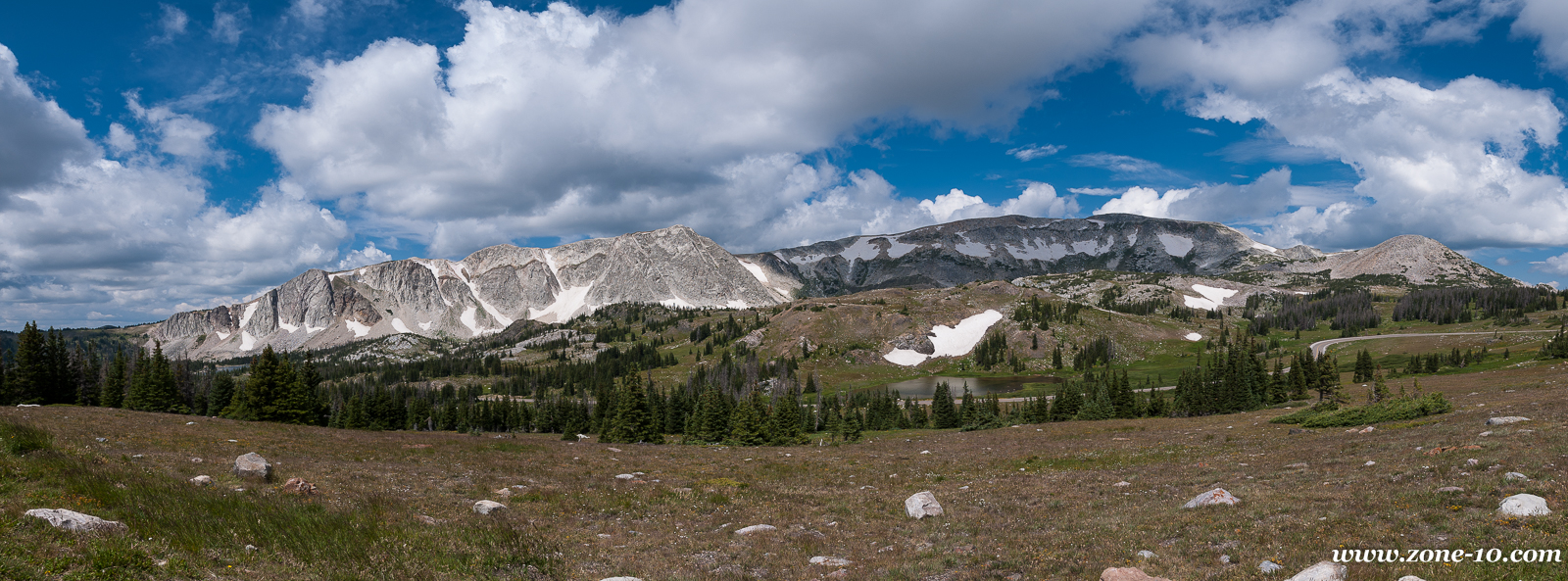
Medicine Bow Peak is located about 35 miles west of Laramie, Wyoming. This photograph was taken just east of the peak at Snowy Range Pass.
This is a 14 image photomerge from a Panasonic DMC-L1 camera using an Olympus DZ 14-42 lens at 14mm, F7.1 and 1/500. Image processed in Adobe Lightroom and Photoshop CC.
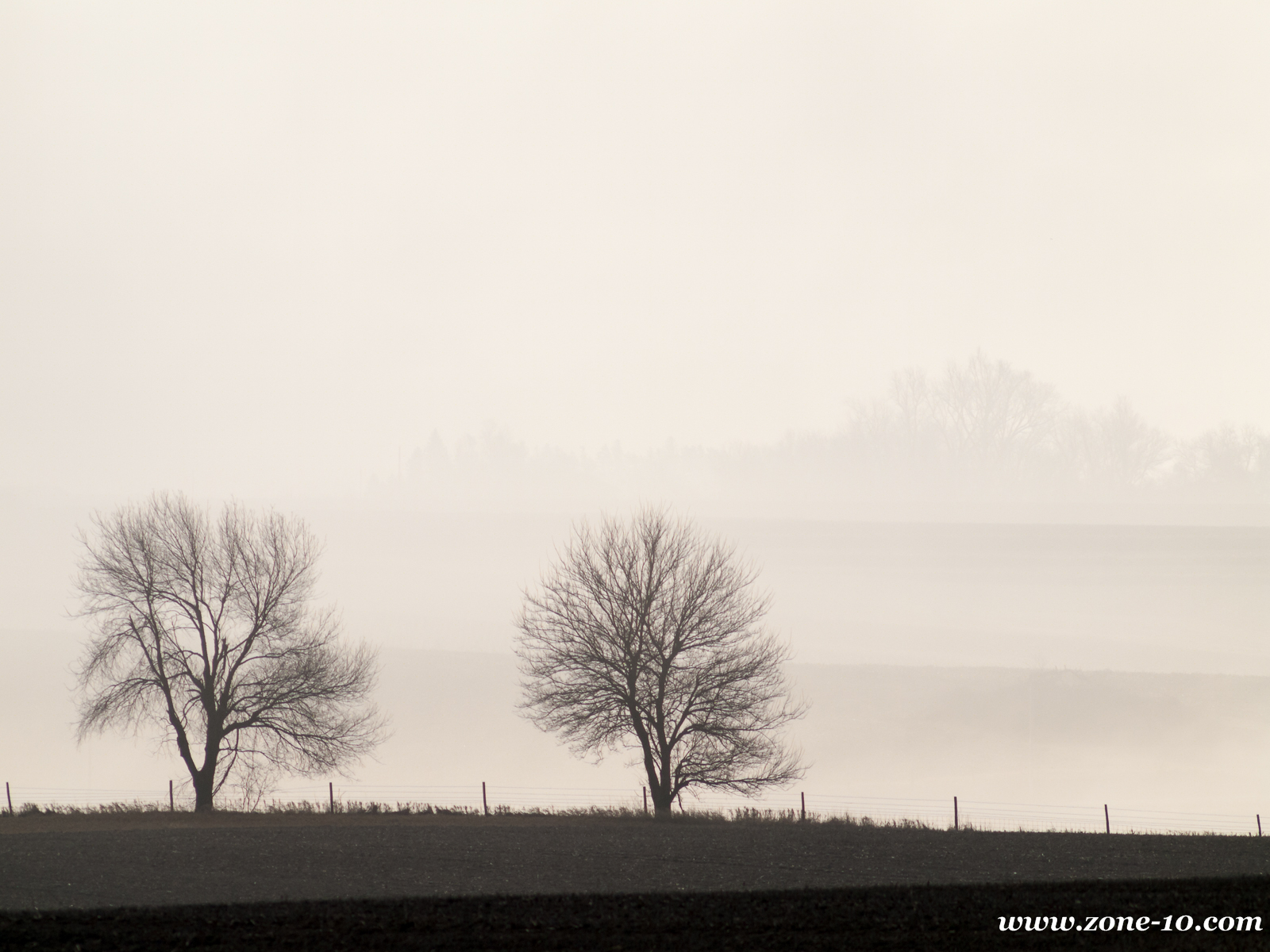
There are times when there is very little color in the scene. This is one of those images. A misty morning in Iowa presented this monochromatic image. No desaturation has been applied to it.
The camera used is the Panasonic DMC-L1 with an adapted OM Zuiko. I believe this was with the 35-80 Zoom.
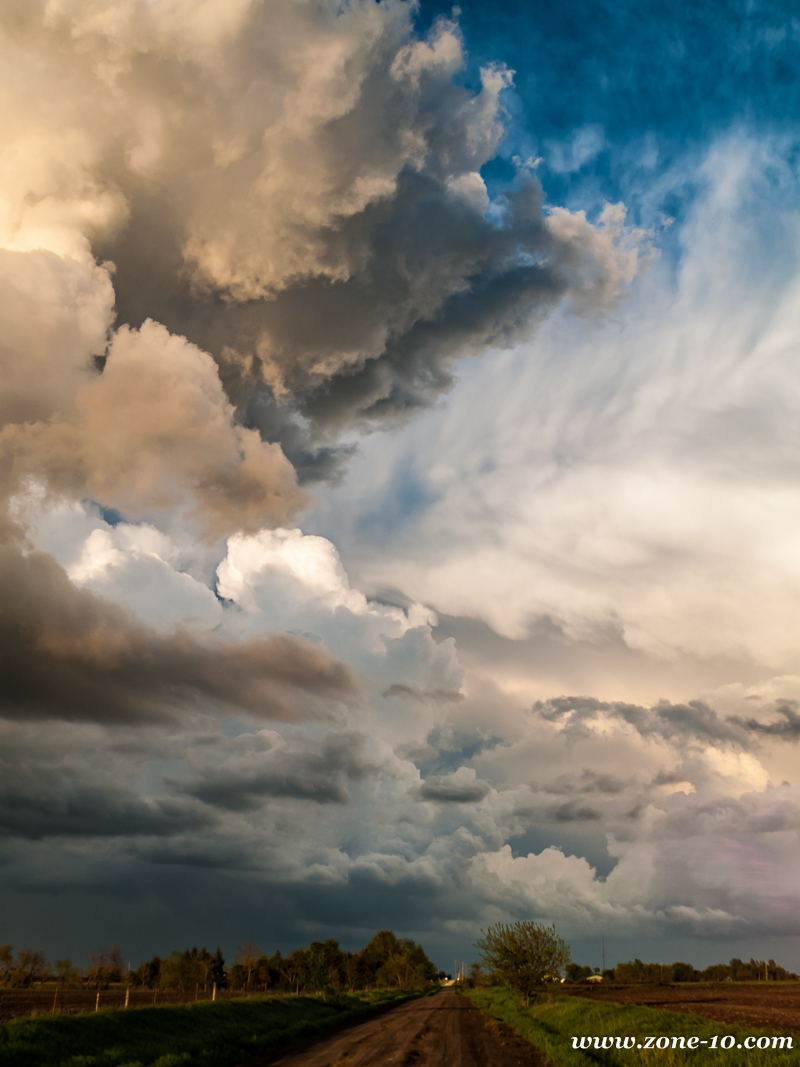
This is a photograph taken in May, 2013 just north of Creston, Iowa. A line of storms had just passed through before sunset and this photo was taken as the sun was getting very low in the sky. Some of the clouds were still in bright sunlight, others were in shadow while this brown cloud was lit by the lowest bit of sun.
Camera used was the Panasonic DMC-L1 with an adapted OM Zuiko 24/2.8 lens. Image processed in Lightroom.